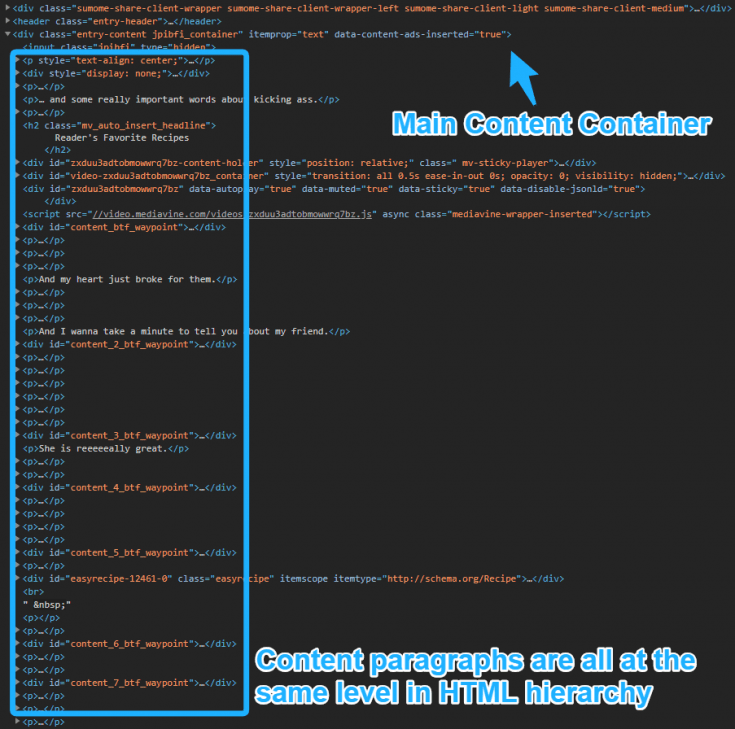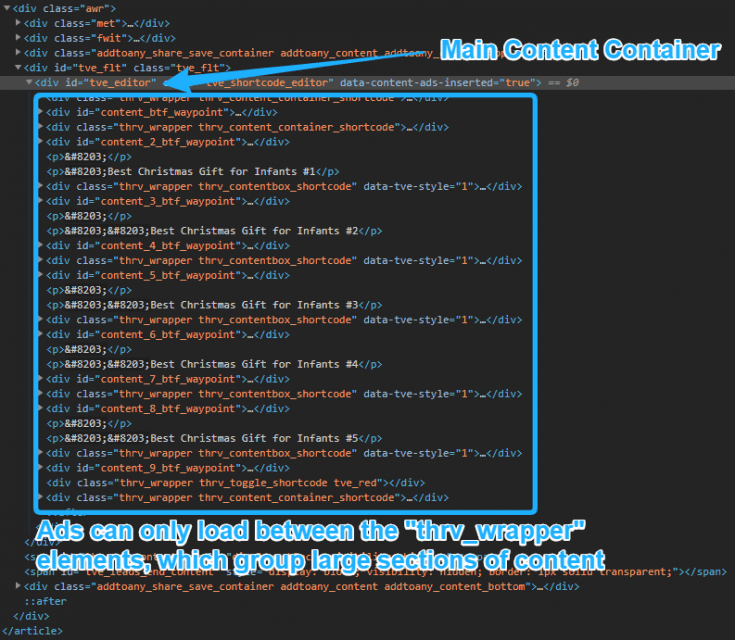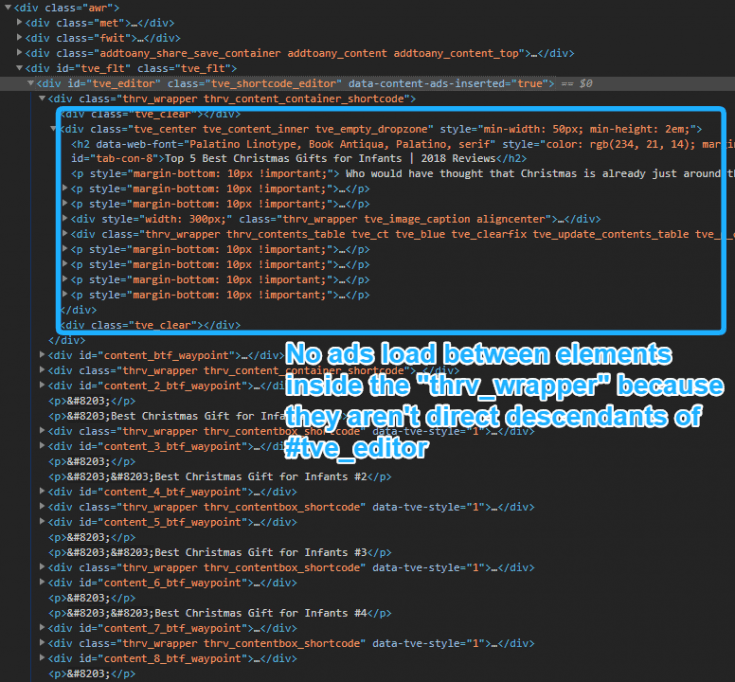Why Post and Page Builders Can Be Bad for Ad Performance


Unfortunately some things just don’t play nice with one another — ads and post builders can be one of them.
Post builders can be a great tool for helping design advanced page layouts without needing to be an expert in HTML and CSS. They’re great for pages that you want to look a specific way like landing pages, about pages, sales pages, etc. However, for the post content throughout your site, using any kind of post or page builder can have a significant impact on your ad revenue.

We’ve always recommended avoiding builders on posts for the sake of ad performance, but we wanted to break down the biggest reasons why post builders can be detrimental to your ads. So why don’t ads and post builders get along?
Post builders actually break the HTML structure of your site’s code by automatically adding wrapped <div> containers around your post content. This makes it very difficult to effectively target your in-content ads. It limits our script’s ability to locate the most optimal placements to maximize your in-content ad performance and earnings.
The complication with any post/page builder relates to the nested <div> structure of the post’s HTML. We provide our script with a unique CSS selector that identifies the main content element on the page.
Our script can then intelligently load in-content ads between elements that are direct descendants of that main content container. The script uses a number of factors such as the height and density of the content and even your reader’s exact screen size to determine optimal locations to maximize performance while abiding by ad policy.
The key to this is that the script can only load ads between immediate children or direct descendants of the single container we specify. Below is a look at a normal post vs. a post utilizing a builder.
We also recently published a help doc that dives into the specific technical elements of common page builders with more visual examples. You can check it out here!

Here’s a look at a post utilizing a page builder:

If we dig a little deeper into the HTML hierarchy, you can see all of the content where ads cannot be automatically inserted:

A few things to keep in mind when considering implementing a builder:
This means that if there is a split between page builder and non-page builder posts throughout your site, then it’s possible that we can only target one type of post over the other with in-content ads. Having only one type of post is best for consistent targeting and for optimal performance and we recommend that they be non-page builder posts. Pages are exempt from this kind of issue since we don’t typically target pages upon launch.

We will always do our best to support whichever direction you decide, but with some post builders and ad performance optimization, there may be a point where our hands become a little tied. While we can target posts with builders with ads in many instances, it isn’t optimal and we unfortunately can’t guarantee that ad performance will be consistent across all posts.
Ultimately, using a post builder is totally your decision! We just want you to be to be fully informed of absolutely anything that could have a negative impact on your ad performance.
A special shoutout to the Support Engineering team for their contributions to this post!
Stay up to date with the latest from Mediavine
As the digital advertising landscape evolves, the need for effective data management and compliance has never been more critical. As part of our commitment to providing exceptional solutions for our …
Welcome to the much-anticipated release of the fifth-annual edition of “The Best eCPM Days of the Year” calendar. Each year, we analyze historical trends to provide publishers with a graphical …
“Let’s talk about politics.” We know. This is a phrase absolutely no one wants to hear uttered around the dinner table or backyard barbecue these days. But hear us out. …